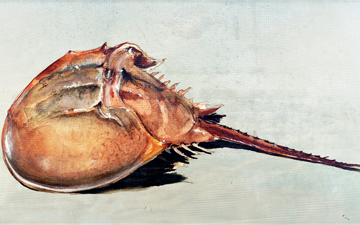Merostomata

Atlantic Horseshoe Crab
Limulus polyphemus


Sorry, there is no photo available. If you have one, please submit
here
.
6 POINTS
• Limulus polyphemus has a MOVE of 2.
• Limulus polyphemus must be played next to at least one LAND TERRAIN neighbour.
Cool, Warm
Graphic by 5bodyblade5bodyblade.deviantart.com/
The Atlantic horseshoe crab (Limulus polyphemus) is a marine chelicerate arthropod. Despite its name, it is more closely related to spiders, ticks, and scorpions than to crabs.[2] Horseshoe crabs are most commonly found in the Gulf of Mexico and along the northern Atlantic coast of North America. A main area of annual migration is Delaware […] read more